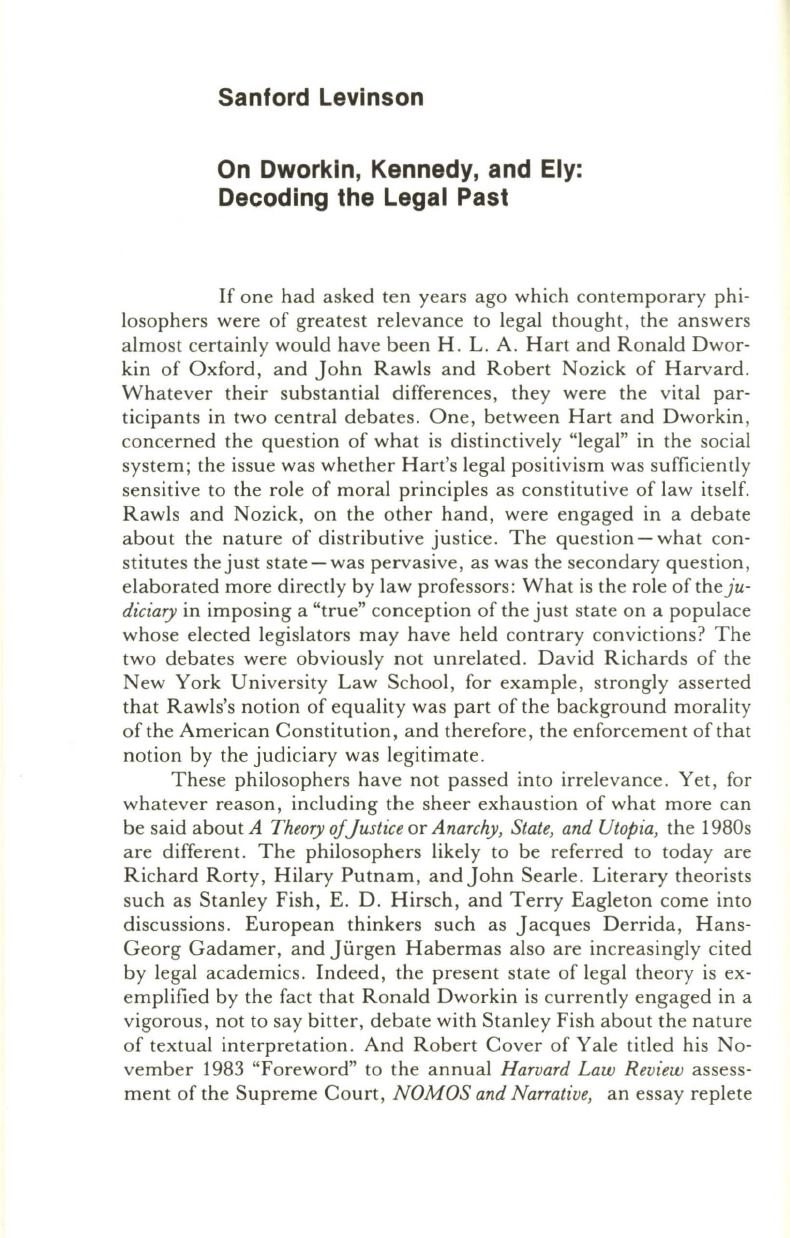
Sanford Levinson
On Dworkin, Kennedy, and Ely:
Decoding the Legal Past
If one had asked ten years ago which contemporary phi–
losophers were of greatest relevance to legal thought, the answers
almost certainly would have been H .
L.
A . Hart and Ronald Dwor–
kin of Oxford, and John Rawls and Robert Nozick of Harvard.
Whatever their substantial differences, they were the vital par–
ticipants in two central debates. One, between Hart and Dworkin,
concerned the question of what is distinctively "legal" in the social
system; the issue was whether Hart's legal positivism was sufficiently
sensitive to the role of moral principles as constitutive of law itself.
Rawls and Nozick, on the other hand, were engaged in a debate
about the nature of distributive justice. The question - what con–
stitutes the just state-was pervasive, as was the secondary question,
elaborated more directly by law professors: What is the role oftheju–
diciary
in imposing a "true" conception of the just state on a populace
whose elected legislators may have held contrary convictions? The
two debates were obviously not unrelated. David Richards of the
New York University Law School, for example, strongly asserted
that Rawls's notion of equality was part of the background morality
of the American Constitution, and therefore, the enforcement of that
notion by the judiciary was legitimate.
These philosophers have not passed into irrelevance . Yet , for
whatever reason, including the sheer exhaustion of what more can
be said about
A Theory ofJustice
or
Anarchy, State, and Utopia,
the 1980s
are different. The philosophers likely to be referred to today are
Richard Rorty, Hilary Putnam, and John Searle . Literary theorists
such as Stanley Fish, E . D . Hirsch, and Terry Eagleton come into
discussions. European thinkers such as Jacques Derrida, Hans–
Georg Gadamer, and Jurgen Habermas also are increasingly cited
by legal academics. Indeed, the present state of legal theory is ex–
emplified by the fact that Ronald Dworkin is currently engaged in a
vigorous, not to say bitter, debate with Stanley Fish about the nature
of textual interpretation. And Robert Cover of Yale titled his No–
vember 1983 "Foreword" to the annual
Harvard Law Review
assess–
ment of the Supreme Court,
NOMOS and Narrative,
an essay replete


